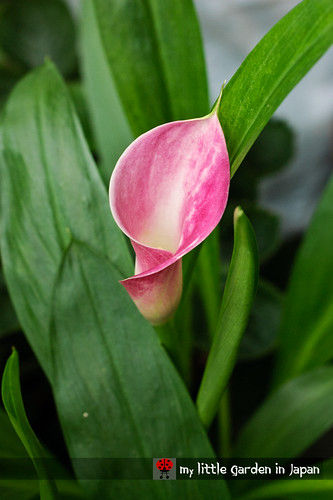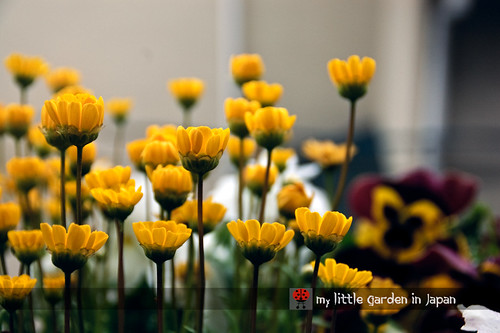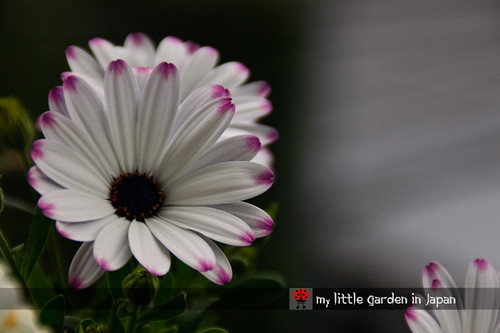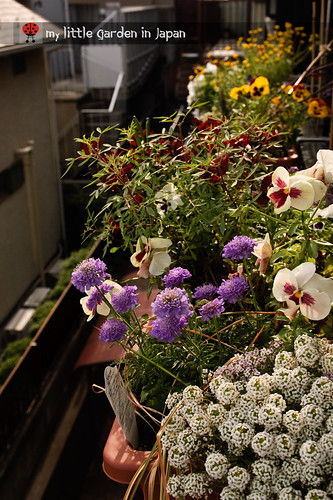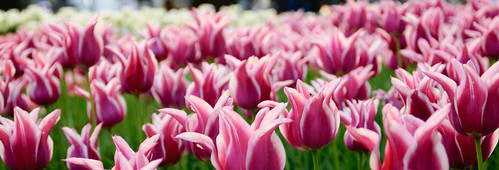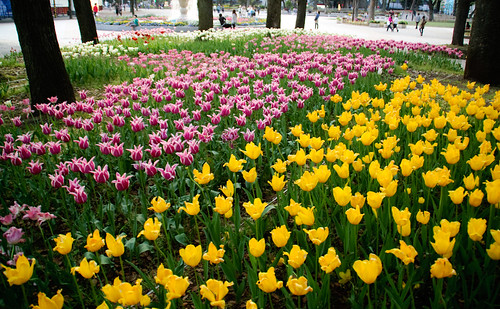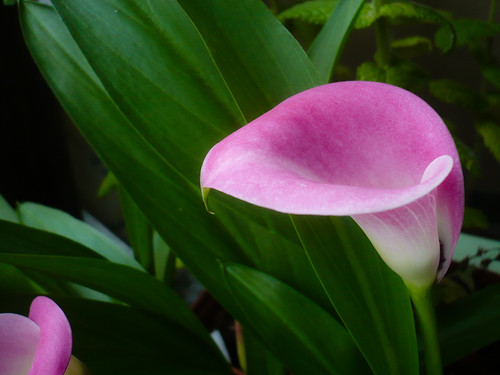Here in Japan is very common to have people traveling north to Hokkaido for the summer holidays, and one of the popular things to do there is visit the lavender farms in the area. I was lucky and had a chance to visit on my first year in Japan. Growing lavender is a big deal in Hokkaido. From what saw they treat the season in a similar way to how they treat sakura season. They have festivals, special lavender food, lavender designs and many products related. It is very fun place to be. Before my visit, I had never seen any lavender farms, so it was a great surprise to see all the never ending fields of purple and walk among the trails. It was an amazing experience.
So, after my visit to the lavender farms that year, of course I had to have some lavender growing in the garden. I got a plant last autumn and took care of it hoping for some summer blooms. It grew a bit during the winter and even more in spring. Finally it started blooming in May, a bit earlier that I expected, but no complains, It was probably just another effect of the vacation drought of spring.
Now after blooming nicely all June, it seems to be starting to stop, so I decided to cut away the flowers that are left and let it grow for the next year.
It was very fun to grow lavender, I had never had a chance to do it before. Even though is a very small plant the scent it produced was very strong, specially in the mornings when I the light wind made it come into the room from the balcony. Hopefully it will give a great display again next season, but for now I say good bye, is time to rest.
So, after my visit to the lavender farms that year, of course I had to have some lavender growing in the garden. I got a plant last autumn and took care of it hoping for some summer blooms. It grew a bit during the winter and even more in spring. Finally it started blooming in May, a bit earlier that I expected, but no complains, It was probably just another effect of the vacation drought of spring.
Now after blooming nicely all June, it seems to be starting to stop, so I decided to cut away the flowers that are left and let it grow for the next year.
It was very fun to grow lavender, I had never had a chance to do it before. Even though is a very small plant the scent it produced was very strong, specially in the mornings when I the light wind made it come into the room from the balcony. Hopefully it will give a great display again next season, but for now I say good bye, is time to rest.





